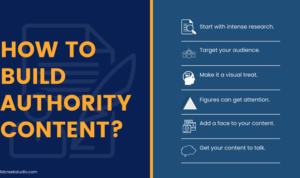Developing Long-Form Content sets the stage for this enthralling narrative, offering readers a glimpse into a story that is rich in detail with american high school hip style and brimming with originality from the outset.
Long-form content is more than just words on a page – it’s about creating a captivating journey for your audience, engaging them from start to finish with valuable insights and compelling visuals. In this guide, we’ll dive into the intricacies of planning, writing, and refining long-form content to help you elevate your online presence.
Understanding Long-Form Content

Long-form content refers to in-depth pieces of writing that cover a topic extensively. These pieces are typically longer than traditional blog posts and delve into a subject with thorough research and analysis.
Examples of Long-Form Content
- Articles: Detailed articles that explore a topic thoroughly and provide valuable insights.
- Whitepapers: Comprehensive reports that present research findings, analysis, and recommendations.
- Guides: In-depth guides that offer step-by-step instructions or information on a specific topic.
Benefits of Creating Long-Form Content
Creating long-form content has several advantages for online platforms:
- Establishing Authority: Long-form content showcases expertise and knowledge on a subject, positioning the creator as an authority in the field.
- Engagement: Longer content keeps readers engaged for a longer period, increasing the time spent on a website or platform.
- Benefits: Search engines tend to favor long-form content due to its depth and comprehensive coverage of a topic, leading to better search rankings.
Importance of Long-Form Content for and Audience Engagement
Long-form content is vital for as search engines prioritize quality and informative content. By creating long-form pieces, websites can improve their search visibility and attract organic traffic. Additionally, engaging content helps retain readers’ interest and encourages them to explore more of the website, ultimately fostering a loyal audience base.
Planning Long-Form Content
Planning long-form content is crucial for creating engaging and informative pieces that resonate with your audience. It involves several key steps to ensure that your content is well-organized and impactful.
Choosing a Topic
When choosing a topic for long-form content, consider your target audience’s interests, current trends, and your expertise. Select a topic that is relevant, timely, and has enough depth to explore in a long-form piece.
Conducting Research
Before creating long-form content, conducting thorough research is essential. Research helps you gather accurate information, validate your points, and provide credibility to your content. Utilize reliable sources, data, and statistics to back up your claims.
Structuring Content
To structure long-form content effectively, consider breaking it down into sections with clear headings. Use subheadings, bullet points, and numbered lists to make the content easier to read and digest. Incorporate visuals, such as images or infographics, to enhance the overall presentation.
Writing Long-Form Content: Developing Long-Form Content

Starting a long-form piece requires a clear Artikel or structure to follow. This can include brainstorming ideas, organizing main points, and creating a flow for the content.
Importance of Creating a Captivating Introduction
The introduction sets the tone for the entire piece, so it’s crucial to make it engaging. Start with a hook to grab the reader’s attention, introduce the topic, and provide a preview of what to expect in the content.
Tips for Maintaining Reader Engagement, Developing Long-Form Content
– Break up the content into smaller sections with subheadings to make it easier to read.
– Use storytelling techniques to make the content more relatable and interesting.
– Incorporate data, statistics, and real-life examples to back up your points and keep readers interested.
– Encourage interaction by asking questions or prompting readers to share their thoughts in the comments.
Incorporating Visuals and Multimedia Elements
Visuals such as images, videos, infographics, and charts can enhance the content and make it more visually appealing. Make sure the visuals are relevant to the topic and help to reinforce key points. Additionally, consider using multimedia elements like audio clips or interactive features to provide a dynamic experience for the readers.
Editing and Refining Long-Form Content
When it comes to editing long-form content, clarity and coherence are key. Editing involves reviewing the entire piece to ensure that the ideas flow logically, the language is clear, and the overall message is coherent. This process may include restructuring paragraphs, removing unnecessary information, or adding more details to enhance understanding.
Importance of Proofreading and Fact-Checking
Proofreading and fact-checking play a crucial role in long-form content creation. Proofreading helps to catch any grammatical errors, spelling mistakes, or typos that may have been overlooked during the writing process. Fact-checking ensures that all the information presented is accurate and supported by reliable sources, enhancing the credibility of the content.
- Proofread for grammar, spelling, and punctuation errors.
- Verify all facts and statistics with reputable sources.
- Check for consistency in tone and style throughout the content.
Tips for Refining Language and Style
To refine the language and style of long-form content, consider the following tips:
- Avoid jargon and complex language that may confuse readers.
- Use active voice to make the content more engaging and direct.
- Vary sentence structure to maintain reader interest.
Optimizing Long-Form Content for Search Engines
Optimizing long-form content for search engines is essential for improving visibility and driving organic traffic. To optimize content without compromising quality:
- Research relevant s and incorporate them naturally throughout the content.
- Use descriptive headings and subheadings to improve readability and .
- Optimize meta tags, URLs, and image alt text for better search engine indexing.
